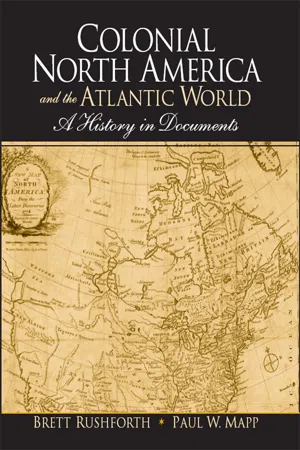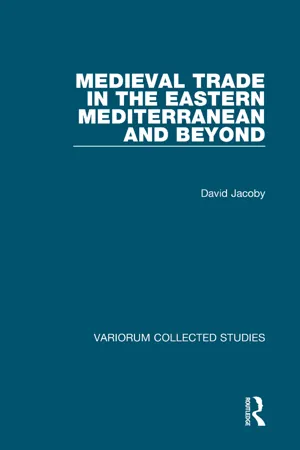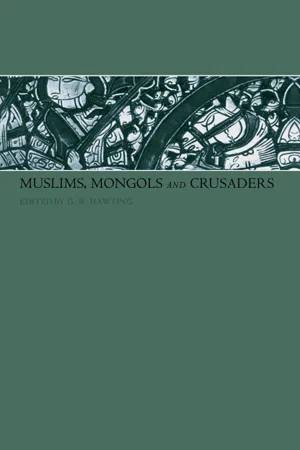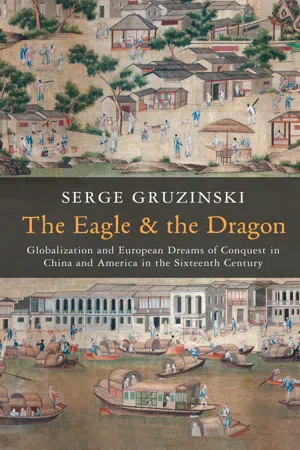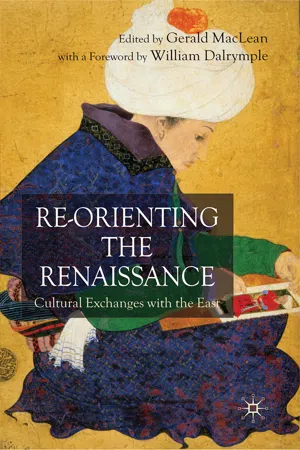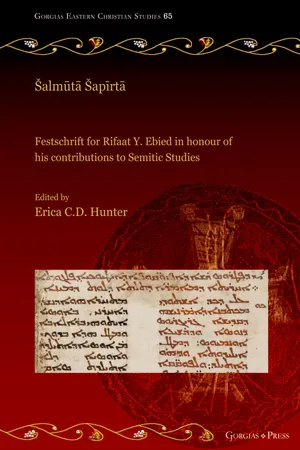History
Marco Polo
Marco Polo was a Venetian merchant and explorer who traveled to Asia in the 13th century. His detailed accounts of his travels in China and the Mongol Empire were compiled into a book called "The Travels of Marco Polo," which became one of the most influential travel books in history. Polo's writings introduced Europeans to the culture, geography, and riches of the East.
Written by Perlego with AI-assistance
Related key terms
1 of 5
9 Key excerpts on "Marco Polo"
- eBook - ePub
Colonial North America and the Atlantic World
A History in Documents
- Brett Rushforth, Paul Mapp(Authors)
- 2016(Publication Date)
- Routledge(Publisher)
2 Europeans and the New World DOI: 10.4324/9781315510330-2Drawn by tales of fabulous wealth in far-off lands, growing numbers of European explorers, traders, and conquerors ventured into increasingly distant Atlantic waters in the fourteenth, fifteenth, and sixteenth centuries. They contributed to one of the signal developments of the early modern period: the intensifying contact among parts of the world that had been largely separate. The following documents display three steps in this process: fantastic European representations of the Indies, the first encounter between Columbus and the peoples of the Americas, and the catastrophic effects of Old World diseases on New World communities.2.1 Marco Polo Describes the Riches of Asia*
* Henry Yule, ed. and trans., The Book of Ser Marco Polo (London, 1903), vol. 1: 185–193, 200–208.Venetian merchant Marco Polo journeyed through Asia from 1271 to 1295. Captured after his return in a war between his home city and Genoa, Marco dictated his Travels to another prisoner, the romance writer Rustichello of Pisa. Many have questioned the accuracy of the resulting account, but we are concerned here less with the journey’s reality than with the book’s reception. The Travels of Marco Polo became enormously popular in late medieval Europe, shaping European ideas about East and South Asia and fueling Europe’s desire to tap the region’s vast wealth. The city of Kinsai described in our selection is modern Hangzhou in eastern China - eBook - PDF
- Donald Maddox, Sara Sturm-Maddox, Donald Maddox, Sara Sturm-Maddox(Authors)
- 2012(Publication Date)
- SUNY Press(Publisher)
235 15 From Alexander to Marco Polo, from Text to Image: The Marvels of India Laurence Harf-Lancner Alexander the Great and Marco Polo are two discoverers who pushed the exploration of the mysteries of the Orient to the farthest limits of the known world. The texts that recount their travels, however, often sacrifice historical truth to exotic revery. Alexander’s expedition concluded in 326 B.C. on the banks of the Hyphase, a sub-tributary of the Indus: confronted with the refusal of his army to proceed farther, the Macedonian descends the Indus and returns to Babylonia, following the shore of the Persian Gulf. But a text whose earliest version, now lost, was presumably written in Greek shortly after Alexander’s death and translated into Latin before the seventh century, the Letter of Alexander of Macedonia to his Teacher Aristotle on his Expedition and the Description of India, evokes at length the hero’s discovery of the marvels of India. 1 This is one of the sources of the French Alexander romances in the twelfth century; under its influence, Alexander’s itinerary, from one text to the next—from the first version of the Letter to Aristotle to the medieval French romances—is reduced in its Persian segment to the advantage of the Indian segment, a mythic space in which the hero did not set foot. 2 As for Marco Polo, reservations have long been expressed about the au- thenticity of his tribulations in China, in Indochina, and in India. There is no agreement about the route followed by the two Polo brothers on their first voyage (1252–69), about that of the two brothers accompanied by their son and nephew Marco on their second voyage (1271–95), nor on the comings and goings of Marco during his stay at the court of the Great Khan. The very authenticity of Marco Polo’s voyages has recently been again called into question, casting him as an armchair explorer, a precursor of Jean de Mandeville. - eBook - PDF
- Doraine Bennett(Author)
- 2010(Publication Date)
- Libraries Unlimited(Publisher)
Rustichello: That’s enough for today. I will finish these pages tomorrow. The world must hear every story you have to tell, my friend. Narrator: The book, A Description of the World or The Travels of Marco Polo, became a best seller. It was copied over and over, passed from hand to hand, and read by people all over Europe. Few people believed Marco’s stories. They seemed impossible. But there were some who did believe them. Explorers like Christopher Columbus read the book with eyes hungry for adventure. In time, as explorers followed the paths Marco traveled, they saw many of the same sights Marco saw. Mapmakers used his book to make maps of Asia. Marco Polo didn’t discover any new lands, but he saw the world of the Far East with new eyes. He changed the way Europeans thought about the rest of the world. He inspired them to want to see it for themselves. Extension Activities 1. When Rustichello wrote down Marco Polo’s story, he added details to make it more excit- ing. Write a story about a trip you took. Add fictional details to make the journey more interesting. 53 2. Chart the course of the Silk Road on a map. 3. Construct a time line showing when Marco Polo left Venice, his journey to China, his travels for the Khan, and his return home. 4. Build a model or draw a picture of the Khan’s capital city. 54 \ Readers Theatre for Global Explorers 8 When China Ruled the Seas Staging Have the narrator stand on the left of the stage at a podium or desk. Seat Zheng He and Ma Juan at a table at the center of the stage. Ma Juan has papers before him. The African Ambassador stands to the left of the table. The stonecutter stands to the right of the table. An easel may be used to represent the stone he carves. Confucian Advisor enters from the right of the stage. Characters (6) Narrator Zheng He (jung-huh) Ma Juan (ma-hwan) Stonemason African Ambassador Confucian Advisor 55 - David Jacoby(Author)
- 2017(Publication Date)
- Taylor & Francis(Publisher)
6 Marco Polo, His Close Relatives, and His Travel Account: Some New Insights David JacobyThe reliability of Marco Polo’s famous travel account has been challenged time and again. It is all the more important, therefore, to submit the sparse documentary sources offering direct and incontrovertible evidence about him and his close relatives to a thorough examination. Once these documents are inserted within their contemporary context, they enable a partial reconstruction of the economic activities conducted by two generations of the Polo family before, after, and in connection with the journeys of their members in Asia. They also shed new light upon Marco Polo’s personality, lifestyle, wealth, and place in Venetian society, and substantially enhance the authenticity of his travel account.Keywords: China; Marco Polo; Medieval Trade; Mongols; Silk; VeniceThe famous Marco Polo and the account of his travels in Asia, entitled Le Divisament dou monde, have generated a considerable flow of publications over the centuries. These publications are far more numerous than those devoted to almost any other medieval topic.1 The reliability of Marco’s account and the authenticity of the information it provides have been challenged time and again, including in recent decades, and have given rise to intense debates.2 Various studies, including some fairly recent ones, have repeatedly stressed some important features of the travel account that has come down to us. First, Marco was not the author of the literary work bearing his name, produced by Rustichello da Pisa, an author imbued with courtly culture.3 Moreover, 120 manuscripts of the account survive, many of which contain additional material not found in others. Some of that material may have been recorded in writing and was deleted by the authors of later versions, while other pieces of information may derive from oral sources. As a result we cannot even determine the exact content of the work originally composed by Rustichello on the basis of information provided by Marco.4- eBook - ePub
- Dr Gerald Hawting(Author)
- 2012(Publication Date)
- Routledge(Publisher)
The book associated with Marco Polo’s name is a description of the known world rather than the memoirs or itinerary of the traveller himself; and this, together with an extremely complex and obscure MS tradition, means that we need not attach too much significance to matters that are omitted. As regards the areas the Venetians visited, the book itself makes claims that are not particularly extraordinary, and demonstrates, moreover, a readiness to distance itself from the outrageous. On several matters, such as the diplomatic and commercial contacts between Yüan China and southern Asia, the Polo texts are so well informed that it is difficult to see how Rusticello might have come by the information without an Italian who had spent time in the Far East. Marco Polo may not have travelled extensively in China, and seems to have been employed at least as much on commissions that entailed lengthy journeys by sea between China and peninsular India. In any case, apart from the two itineraries within China which bear the stamp of personal experience, the book is in large measure only loosely arranged around places which it assures us Marco or all three Polos visited; and that the Venetians were not in all the places mentioned is made quite explicit. We have, lastly, to distinguish where the book says the Polos went from the claims it makes (or some MS traditions make) for their credentials, and to confine our scepticism to the latter. The fact that Marco Polo or his co-author or later copyists exaggerated his importance while in China or on the voyage from China to Persia has long been suspected and can hardly be in doubt. But it does not in itself demonstrate that he was never in China or, worse still, never east of the Crimea.Notes
1 Earlier versions of this study were read to my colleagues in the History Department at Keele University, and to the Seminar on the History of the Middle East at the School of Oriental and African Studies, London, in April 1996.1 am grateful for the stimulating questions and discussions that followed.2 Hiroshi Watanabe (comp.), Marco Polo bibliography 1477–1983 (Tokyo, 1986).3 Martin Gosman, ‘Marco Polo’s voyages: the conflict between confirmation and observation’, in Zweder von Martels (ed.), Travel fact and travel fiction: studies on fiction, literary tradition, scholarly discovery and observation in travel writing (Leiden, 1994), 72–84 (see especially pp. 76–7, 83–4). For earlier views of the Mongols, see Gian Andri Bezzola, Die Mongolen in abendländischer Sicht: ein Beitrag zur Frage der Völkerbegegnungen (1220–1270 ) (Berne and Munich, 1974); Felicitas Schmieder, Europa und die Fremden: die Mongolen im Urteil des Abendlandes vom 13. bis in das 15. Jahrhundert (Beiträge zur Geschichte und Quellenkunde des Mittelalters, 16, Sigmaringen, 1994). Similarly, the delay in the West’s absorption of the new information from the ‘sophisticated’ East is compared with the easy assimilation of the material on the relatively ‘uncivilized’ Canary islanders: J. K. Hyde, ‘Real and imaginary journeys in the later Middle Ages’, Bulletin of the John Rylands Library , LXV - eBook - ePub
The Eagle and the Dragon
Globalization and European Dreams of Conquest in China and America in the Sixteenth Century
- Serge Gruzinski(Author)
- 2015(Publication Date)
- Polity(Publisher)
By 1513 Jorge Alvares had reached the Chinese coast. A year later another expedition was entrusted to Rafael Perestrello, a Portuguese second cousin of the son of Christopher Columbus, then viceroy of the Indies, Diego Colón. In the spring of 1515, at the head of three junks, Perestrello sailed for China. He was not alone. The Portuguese and the Italians had already taken the same route. It was from Canton, in November 1515, during his first stay in Asia, that Giovanni da Empoli wrote a letter describing China in a few powerful images: the towns, the population, the wealth, the buildings – they all seemed to him extraordinary. Da Empoli died off the Chinese coast in a fire on his ship, in 1517. On the Portuguese side, people were already beginning to move into a post-Marco Polo age, in which Ming China began to eclipse the Cathay of the Mongols. The scholars of Europe were much slower to update their knowledge. Their maps continued to repeat what Ptolemy and Marco Polo had written about this part of the world, while those used by the Portuguese sailors, which they jealously guarded, had taken note of the discovery: they kept the latest information about the Chinese coast and the Pearl River Delta secret. Were the New Indies in Asia? If the Spanish colonists in the Caribbean could believe they were within reach of prosperous trading societies, it was thanks to the expectations and delusions disseminated by Christopher Columbus, who was convinced he had come close to Japan and the Empire of the Great Khan. For the reasons outlined above, Marco Polo's Travels, which few had read but many had heard talked about, interposed itself between Castile and the New World. Now, in the first years of the sixteenth century, the Venetian traveller found a new public in Lisbon and Seville. Polo's book was published in Portuguese in 1502, quickly followed by a first Castilian edition, which came out within a year in Seville - eBook - PDF
Re-Orienting the Renaissance
Cultural Exchanges with the East
- G. Maclean(Author)
- 2005(Publication Date)
- Palgrave Macmillan(Publisher)
1 The Status of the Oriental Traveller in Renaissance Venice Deborah Howard Travel lore in its widest sense was an integral part of Venetian culture. Over the centuries, merchant handbooks, ambassadors' reports and pilgrim chronicles had recorded journeys made in the interests of trade, diplomacy and Christian devotion. Within Venice this body of knowl- edge circulated freely, orally and in manuscript form, but during the sixteenth century its dissemination was to be transformed by ambitious printing initiatives. A new genre, the printed anthology of travel narra- tives, gave added authority to geographical information and helped to shape the ways in which travellers were perceived. The accumulation of information about foreign parts was a crucial component of the education of Venice's mercantile nobility, who often travelled abroad at a very young age. For example, from the age of 17 to 22, the diarist Girolamo Priuli traded in London, where he claimed to have met King Henry VII on several occasions. 1 In his youth, Giosafat Barbaro, later to be Venetian ambassador in Persia, traded for 16 years based at Tana on the Black Sea. 2 The young Chioggian merchant Nicolo dei Conti spent 24 years in Cairo from 1415 to 1439, trading on behalf of his father in Egypt, Persia and India. 3 Alvise da Mosto, later a celebrated explorer, began his mercantile career in his teens as agent of the merchant Andrea Barbarigo from 1442 to 1448. 4 As he later explained: 'My whole idea was to spend my youth trading on every possible route, to accumulate facolta [a word comprising both authority and wealth], so that with the experience of the world I would be able to achieve every perfection of honour' (emphasis added). 5 For fifteenth-century Venetian merchants, honour was inseparable from commercial success. In 1421 the future explorer Pietro Querini went to Flanders 'with the aim of acquiring something of what we men of the world crave insatiably, that is honour and riches' (emphasis 29 - eBook - PDF
Šalmūtā Šapīrtā
Festschrift for Rifaat Y. Ebied in honour of his contributions to Semitic Studies
- Erica C.D. Hunter(Author)
- 2023(Publication Date)
- Gorgias Press(Publisher)
The complex textual history of the Description of the World means that most scholars do not have easy access to the main versions of the text in Franco-Italian or in Latin and must rely instead on modern translations which combine material from several manuscriptal traditions and medieval languages in order to produce a smooth text for the general reader. 8 THE CRITIC— FRANCES WOOD, ‘DID Marco Polo GO TO CHINA?’ For the modern scholar of the eastward expansion of the Christian Church, especially of the Syriac-speaking Church of the East under the Mongols, the Description of the World of Marco Polo has long been regarded as a unique eye-witness source along with the travel accounts of other medieval European travellers to the Mongol court such as William of (Willem van) Rubruck and Odorico da Pordenone. Under the Mongols, the Church of the East had regained its pole-position as a missionary reli- gion in Central Asia and China while the Catholic Church was very much a new- comer. Unlike most of his fellow ‘western’ travellers who were predominantly mem- bers of the Franciscan Order and wrote their disparaging accounts of the Church of the East in their role as Catholic missionaries or papal envoys, the Description of the World is a secular work and the information it contains on the activities of the Church of the East in the Mongol Empire is particularly valuable because of the circumstan- tial nature of this information. - eBook - PDF
- Joshua A. Fogel(Author)
- 2005(Publication Date)
- Berghahn Books(Publisher)
(Qian 1981: 119) These aesthetically and politically charged topics played a central role both in the history of European art and in the contemporary debate in China over the best means toward the enlightenment of the masses. In addressing these issues, however obliquely, in her travel writing, Shan Shili is bringing herself into the arena of current public-political debate. From her intimate knowledge and refined taste she thus derives her authority to write her way into the public arena usually reserved for male literati or male reformists. 12 Hu Ying 155 To re-know the known: on Marco Polo ‘On Marco Polo’ presents a detailed biography of the Venetian traveller as the essay traces the genealogical story to Marco’s father and uncle, Niccolo and Maffeo Polo, then to the story of Marco Polo himself until his death in Venice. The narrative progression on the whole covers similar ground as the standard biography of Marco Polo found in the prologue of his Description of the World (c. 1298). Shan Shili’s particular angle of presentation, however, tells us much about why she is interested in this figure. In the preface, Shan introduces Marco Polo by placing him in two overlapping contexts: As a Westerner who served in the court of China [Zhonghua], Marco Polo is much admired by Westerners …. His work detailed events in China at the time and is very useful as a supplementary source. It is the requisite reading for any Westerner who is interested in Chinese affairs, as Marco Polo is considered the first scholar of Eastern studies [dongxue]. (Qian 1981: 223) These are then the reasons for Shan’s own fascination with Marco Polo and, by extension, the rationale why her readers might find the subject matter interesting: for understanding Chinese history, since Marco Polo’s work supplies useful and previously inaccessible material; and for understanding how Westerners perceive the Chinese, since Sinologists at the time were all influenced by Marco Polo.
Index pages curate the most relevant extracts from our library of academic textbooks. They’ve been created using an in-house natural language model (NLM), each adding context and meaning to key research topics.
